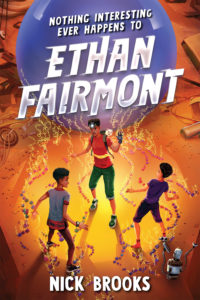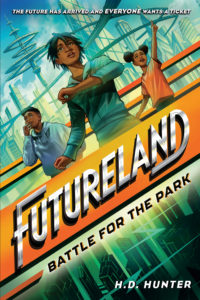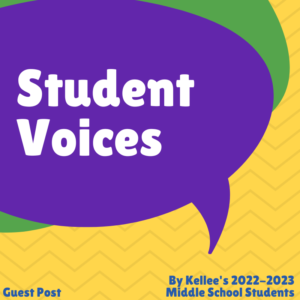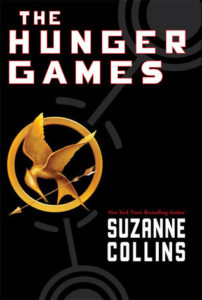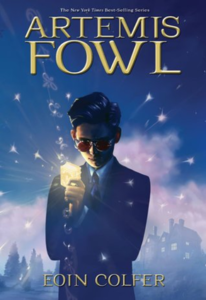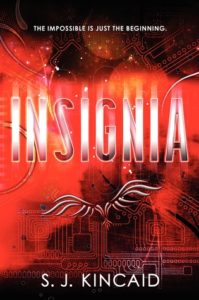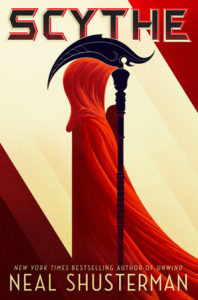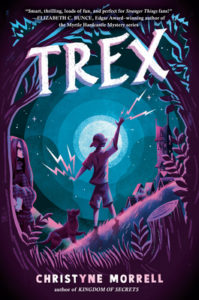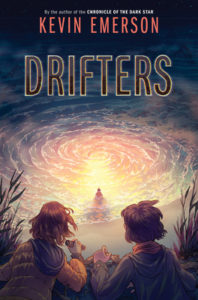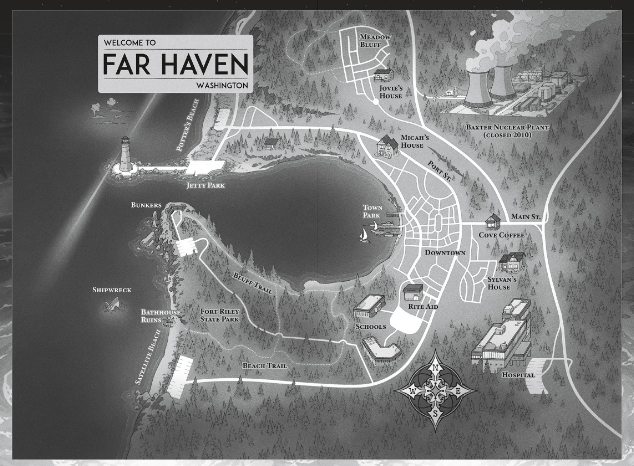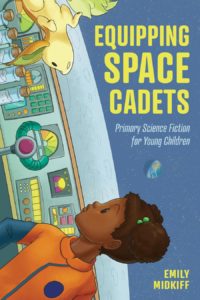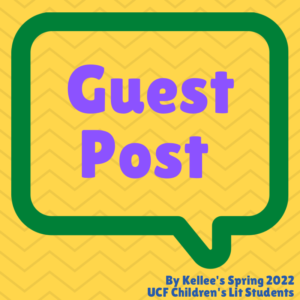
One of the assignments during my Spring Children’s Literature course at UCF was creating a mini-teaching guide for the books we read for book clubs. We started with picture books for practice then students created them in their book clubs each week.
Today, I am happy to share the classroom uses and discussion questions found by my UCF Elementary Education students about science fiction novels.
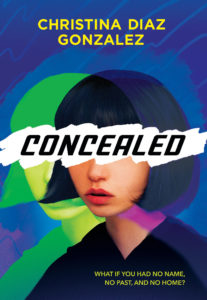
Concealed
Author: Christina Diaz Gonzalez
Published October 19th, 2021 by Scholastic
Summary: Ivette, Joanna, and now: Katrina
Whatever her name is, it won’t last long. Katrina doesn’t know any of the details about her past, but she does know that she and her parents are part of the Witness Protection Program. Whenever her parents say they have to move on and start over, she takes on a new identity. A new name, new hair color, new story.
Until their location leaks and her parents disappear. Katrina embarks on a dangerous rescue mission to save them-and find out the truth of her past at last.
Yet every new discovery shows that the Katrina’s entire life has been nothing but lies. Katrina has always kept her parents’ secrets. But it turns out, they were the ones keeping secrets from her this whole time. Could she be the reason they’ve been hiding all these years? The truth will throw everything Katrina has ever believed about herself into question.
Concealed is an action-packed adventure story by award-winning author Christina Diaz Gonzalez.
Teachers’ Tools for Navigation: This is a great relatable book for young adults! Throughout the story, Katrina, the main character, fights for more information about herself and her family and why they are on the run, but she often gets overlooked and ignored when she’s asks questions. A lot of teens experience this and I think it would be a great book for a book club or even an assigned read for the class to explore sci-fi and have good discussions.
This books interdisciplinary elements include science and family and friendship values. It touches on the development of science in the DNA and gene makeup, which students may be unaware of at the time of reading which may lead them to explore more on their own. The family and friendship values show that no matter what a family goes through there is still love there. Along with this it shows the importance of friendship and everything that goes along with having a good friend by your side, even when at first you don’t think it is important.
Discussion Questions:
- What would you do if you were Katrina and no one would answer your questions?
- Would you have wanted to go with Katrina on this adventure? Why or why not?
- Katrina’s skill is drawing and Parker’s skill is computers, describe what your skill is.
- Describe how you would feel if you found out that you had a lost twin sister/brother.
- What did you think of X in the story? Did you think he was a good character or a bad character? Why?
- What would be your name if you had to choose another one?
- Describe the relationship between Katrina and Parker.
- Describe one event in the book that stood out to you the most and give your reasoning.
- Why do you think Katrina didn’t like moving so much? How would you have felt if you were in her shoes?
- Why do you think the main character’s family has to run and change their identity so many times?
- Do you think it would be safer for Katrina to leave Parker out of her life? Why or why not?
- Describe the relationship Katrina has with her parents as the book goes along. What about Parker? X?
- Why do you think Katrina was so open with Parker, even at the beginning of their friendship?
- Do you believe X is trustworthy? Why or why not?
- Why do you believe B and L refuse to tell Katrina the truth about what happened before she lost her memory?
- Do you think Ellla will side with her family or Mr. Sterling?
- Describe what part of the book surprised you the most.
- Do you think it is a good idea for Ellla and Katrina to share their life story on social media? Why or why not?
Recommended For:



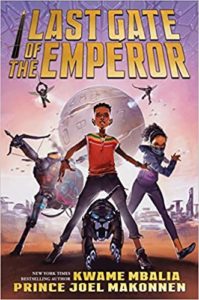
The Last Gate of the Emperor
Authors: Kwame Mbalia & Prince Joel Makonnen
Published May 4th, 2021 by Scholastic Press
Summary: An Afrofuturist adventure about a mythical Ethiopian empire. Sci-fi and fantasy combine in this journey to the stars.
Yared Heywat lives an isolated life in Addis Prime — a hardscrabble city with rundown tech, lots of rules, and not much to do. His worrywart Uncle Moti and bionic lioness Besa are his only family… and his only friends.
Often in trouble for his thrill-seeking antics and smart mouth, those same qualities make Yared a star player of the underground augmented reality game, The Hunt for Kaleb’s Obelisk. But when a change in the game rules prompts Yared to log in with his real name, it triggers an attack that rocks the city. In the chaos, Uncle Moti disappears.
Suddenly, all the stories Yared’s uncle told him as a young boy are coming to life, of kingdoms in the sky and city-razing monsters. And somehow Yared is at the center of them.
Together with Besa and the Ibis — a game rival turned reluctant ally — Yared must search for his uncle… and answers to his place in a forgotten, galaxy-spanning war.
Teachers’ Tools for Navigation: In a way, students can learn about culture in this book. From there, diversity can be introduced into the lesson. Also, it would be great for discussing using your own personal interests and culture in your writing. The story also intertwines Ethiopian history and culture with space adventure and science fiction. This will be entertaining for the students while also educational. Another thing that can be taught while reading this book is that you will have to face the consequences of your own actions. If you are going to do something that you know is wrong, something bad will happen afterwards.
Students could also make timeline of events which would be interesting to see Yared’s adventure and battles laid out.
This novel would be considered interdisciplinary because it intertwines history with science fiction. It also introduces the idea of secret underground games, space & robots, as well as intergalactic war. These topics are mostly seen in movies but the main plot line is finding the uncle who would have the answers. It shows the students that even in stressful situations, never giving up and determination in hard times shows better outcomes.
Discussion Questions:
- Think about what makes up you. What aspects of yourself would you reflect in your stories?
- Compare a time when Yared was brave to one where he was scared? How did he overcome his fear?
- Describe a time Yared had to ask for help?
- What futuristic items in the book do you wish we had now? Why?
- Describe the relationship between Yared and his uncle.
- Predict what you think Yared will do in the next book.
- How would you characterize Besa? How does the author convey her feelings without talking?
- Why do you think the story starts with an audio transcript? Did it grab your attention or confuse you?
- How do you feel about the rules on Addis Prime? Would you want to follow them?
- Does this novel remind you of any movies or maybe other literature you have read?
- How would you feel if you were in the same situation as Yared?
- Do you think Yared has good qualities or does he often find himself in trouble because of them?
- What other Ethiopian stories have we read in class before? Do you find similarities in the novels?
- Do you think the illustrations on the cover with Yared and the robots in space gave you a good summary of what the book might be about?
- What inferences can you make by looking at the cover of the book?
- How and why did the setting change?
- What key words from the novel stood out to you the most and why?
- If the authors were to write another novel using Yared and Besa, what do you think it would be about?
Recommended For:




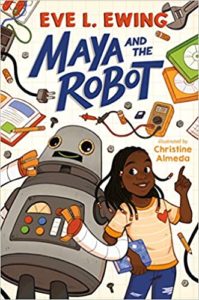
Maya and the Robot
Author: Eve Ewing
Illustrator: Christine Almeda
Published July 13th, 2021 by Kokila
Summary: An illustrated middle grade novel about a forgotten homemade robot who comes to life just when aspiring fifth-grade scientist Maya needs a friend—and a science fair project.
Maya’s nervous about fifth grade. She tries to keep calm by reminding herself she knows what to expect. But then she learns that this year won’t be anything like the last. For the first time since kindergarten, her best friends Jada and MJ are placed in a different class without her, and introverted Maya has trouble making new friends.
She tries to put on a brave face since they are in fifth grade now, but Maya is nervous! Just when too much seems to be changing, she finds a robot named Ralph in the back of Mr. Mac’s convenience store closet. Once she uses her science skills to get him up and running, a whole new world of connection opens up as Ralph becomes a member of her family and Maya begins to step into her power.
Teachers’ Tools for Navigation: This book would be useful in the classroom in order to get children interested in STEM:
Students could learn more about robotics and electrical elements. Following along with Maya as they learn students are introduced to new ideas and definitions that will bridge their understanding of STEM.
Students will be able to create their own science fair projects. Students can present their own ideas and also learn about how projects in the book worked
Discussion Questions:
- Do you think that her finding the robot impacted her in a good or bad way? Why?
- What piece of modern technology does Ralph remind us of?
- What modern upgrade would you give Ralph?
- What is something in your life that you would consider your Ralph?
- Who can relate to Maya? Explain why?
- Throughout Maya and the Robot there are many different lessons you can take away. What lessons can you take away from the book and why?
- How did Ralph allow Mr. Mac to heal after Christopher’s death?
- Throughout the book Maya often feels alone in the classroom. What is one way to make your classmates feel included?
- Could Maya have fixed her relationship with MJ and Jada earlier in the book? Why or why not?
- Throughout the book Maya’s teacher calls her by the incorrect name. Why is it important to stand up for yourself when you feel uncomfortable?
Recommended For:

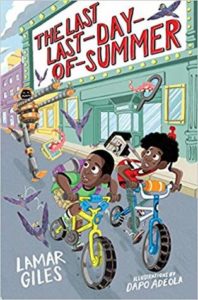
The Last Last-Day-of-Summer
Author: Lamar Giles
Illustrator: Dapo Adeola
Published April 2nd, 2019 by Versify
Summary: When two adventurous cousins accidentally extend the last day of summer by freezing time, they find the secrets hidden between the unmoving seconds, minutes, and hours are not the endless fun they expected.
Otto and Sheed are the local sleuths in their zany Virginia town, masters of unraveling mischief using their unmatched powers of deduction. And as the summer winds down and the first day of school looms, the boys are craving just a little bit more time for fun, even as they bicker over what kind of fun they want to have. That is, until a mysterious man appears with a camera that literally freezes time. Now, with the help of some very strange people and even stranger creatures, Otto and Sheed will have to put aside their differences to save their town—and each other—before time stops for good.
Teachers’ Tools for Navigation: Using this book in the classroom could help students become more brave or confident. Majority of the students should be able to relate to this story because it is almost like a dream come true. This book could open up a lot of “What if” questions for students and I love it. Students will be able to use their imaginations, better their reading skills, and have fun at the same time.
This story would also be a fun story to read together as a class and it is a fun novel to get students eager to read!
Once students are done reading this book, there could be a class reflection on how we can all be brave heroes in real life in our homes and at school. To make this even more exciting students can create their own super hero crest and name. Students will practice helping others and I will make sure their parents know about this assignment to help the students with understanding that we help each other all of the time not just at school, but to practice it everywhere if applicable and not dangerous.
Students can also respond by writing their own fictional story about their own adventures on the last day of summer.
Discussion Questions:
- In the novel the acronym BTSFOASTF is written by Grandma. What does it mean?
- With a partner, come up with an answer together and write it on the white board. Grandma is diabetic, What medicine did she take and what is it for?
- When Otto and Sheed took the picture, what happened?
- Why did Sheed decide not to tear up the picture?
- What was the one thing Otto discovered had been consistent since time had been frozen, and in which chapter was this discovered? Would you have noticed the same thing? Why?
- For how long did Otto and Sheed’s adventure last, and why do you think so?
- How do you unfreeze a person in the story?
- Why did TimeStar lie?
- Who is TimeStar and why do you think so?
- What role did the clock watchers play in this story?
- How are Otto and Sheed alike? Different?
- How do Otto and Sheed work together and overcome their differences?
- What were some clues that you noticed when reading, that something was not right after the boys took the photo?
- Describe the boys relationship with their grandmother
- If you could time travel, would you rather go forward in time or backward in time?
- What was your favorite part about Sheed and Otto’s day?
- Are you surprised by who Mr. Flux is?
- Is this how you would want to spend your last day of summer?
Recommended For:





